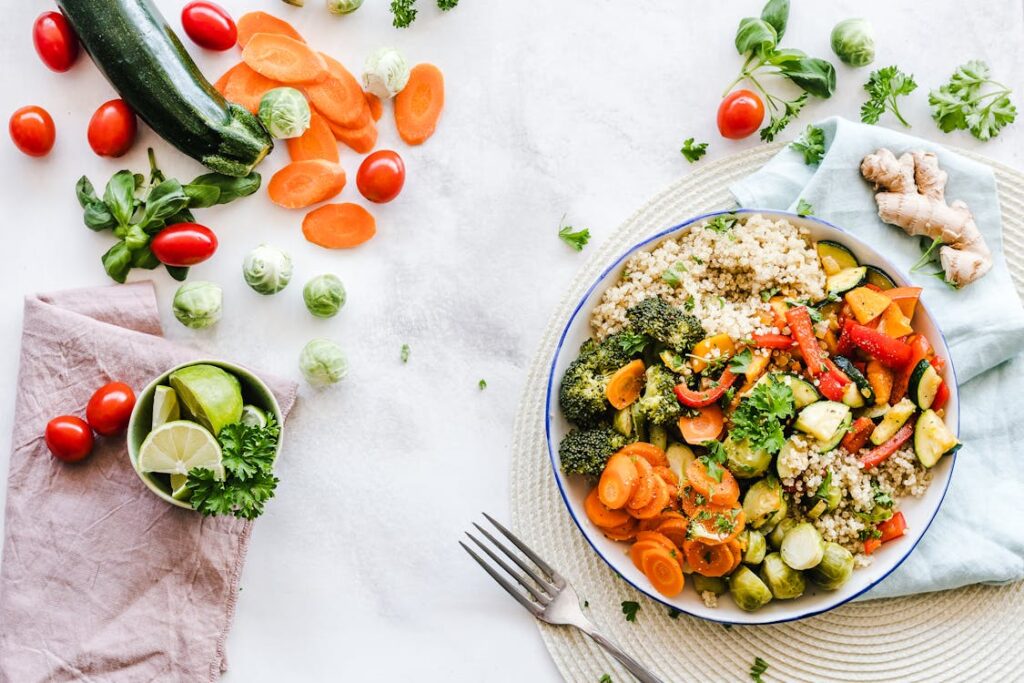If you’ve ever found yourself reaching for takeout menus more often than you’d like, or if weeknight dinners feel like a daily scramble, meal prepping might just be your new best friend. It’s a simple, practical way to save time, eat healthier, and stress less about what’s for dinner. Even if you’re a total beginner, getting started with meal prep is easier than you might think.
What is Meal Prep?
Meal prep is the process of planning, preparing, and portioning out your meals in advance. Whether it’s chopping veggies for the week, cooking full meals to reheat later, or just organizing your snacks, meal prep can take many forms depending on your schedule and needs.
The goal is to make healthy eating easier, faster, and more convenient, especially on your busiest days.
Why Should You Start Meal Prepping?
Before we get into the how-to, let’s talk about the why.
- Saves Time: Imagine coming home after a long day and having a healthy meal ready to go. No cooking, no mess, no stress.
- Saves Money: Fewer impulse trips to the drive-thru or the grocery store mean more money stays in your pocket.
- Promotes Healthier Eating: When healthy meals are ready and waiting, you’re less likely to reach for junk food.
- Reduces Food Waste: Planning ahead helps you buy only what you need—and actually use it.
Step-by-Step: How to Start Meal Prepping
Getting started doesn’t have to be complicated. Here’s a beginner-friendly guide to make meal prep easy and achievable.
1. Start Small
One of the biggest mistakes beginners make is trying to prep an entire week’s worth of meals all at once. That can feel overwhelming fast. Instead, start with just one meal, like lunches for workdays, or prep a few basics like chopped veggies and grilled chicken.
Once you get the hang of it, you can scale up.
2. Plan Your Meals
Take a few minutes to think about what you want to eat this week. Keep it simple. Pick 2–3 recipes you love and that store well. Look for meals that are:
- Easy to cook in bulk (like stir-fries, pasta, or casseroles)
- Reheat well without losing flavor or texture
- Balanced with protein, carbs, and healthy fats
Pro Tip: Repeating meals isn’t boring—it’s efficient. It saves you time, money, and brainpower.
3. Make a Grocery List
Once your meals are planned, write out a detailed grocery list. Organize it by sections of the store (produce, dairy, meat, pantry staples) to make your shopping trip quicker and more efficient.
Stick to your list! Impulse buys can derail your budget and your healthy eating goals.
4. Pick the Right Day
Choose a day that fits your schedule for meal prep. Sundays work great for many people, but any day when you have a few free hours will do.
Block off 2–3 hours. Put on a good playlist, a favorite podcast, or an audiobook to make the time fly.
5. Gather Your Gear
You don’t need fancy gadgets, but a few basics help:
- Good knives
- Cutting board
- Pots and pans
- Baking sheets
- Measuring cups and spoons
- Storage containers (preferably glass or BPA-free plastic)
Tip: Invest in a few compartmentalized containers if you plan to prep full meals. They make portioning easy and keep different parts of the meal separate.
6. Prep Smart
Efficiency is key. Try batching tasks:
- Chop all your veggies at once.
- Cook multiple proteins at the same time (bake chicken breasts while simmering ground beef, for example).
- Use your oven and stovetop simultaneously.
It’s amazing how much you can accomplish when you focus on one task at a time instead of hopping between dishes.
7. Portion It Out
After everything’s cooked, portion meals into your containers. Label them if necessary (especially if you’re prepping different meals for different days).
This step is crucial because it makes grab-and-go meals truly effortless during the week.
Meal Prep Ideas for Beginners
Need a little inspiration? Here are a few simple ideas to kickstart your meal prep journey:
- Breakfast: Overnight oats, egg muffins, smoothie packs
- Lunch: Grilled chicken salads, rice bowls, wraps
- Dinner: Sheet pan dinners (chicken and veggies), pasta bakes, chili
- Snacks: Hummus with veggies, yogurt parfaits, mixed nuts
Keep your menu varied enough to stay excited, but simple enough not to feel overwhelmed.
Common Meal Prep Mistakes (and How to Avoid Them)
Starting anything new comes with a learning curve. Here are a few pitfalls to watch out for:
Making Too Much Food:
Start small to avoid getting tired of eating the same thing or throwing food away.
Skipping the Planning Stage:
Winging it doesn’t work well for meal prep. A few minutes of planning saves hours later.
Ignoring Food Safety:
Let cooked foods cool before sealing them in containers, and refrigerate promptly. Generally, prepped meals should be eaten within 3–4 days.
Prepping Complicated Meals:
Stick to simple recipes at first. Save the gourmet experiments for weekends when you have more time.
Meal prepping isn’t about being perfect. It’s about making your life easier. Start small, keep it simple, and adjust as you go. Over time, you’ll find a rhythm that works for you, and you’ll wonder how you ever lived without it.
Remember: even a little bit of prep is better than none. Whether it’s chopping some veggies for snacks or prepping a few lunches, every step you take toward meal prep will pay off in more time, less stress, and healthier eating.


